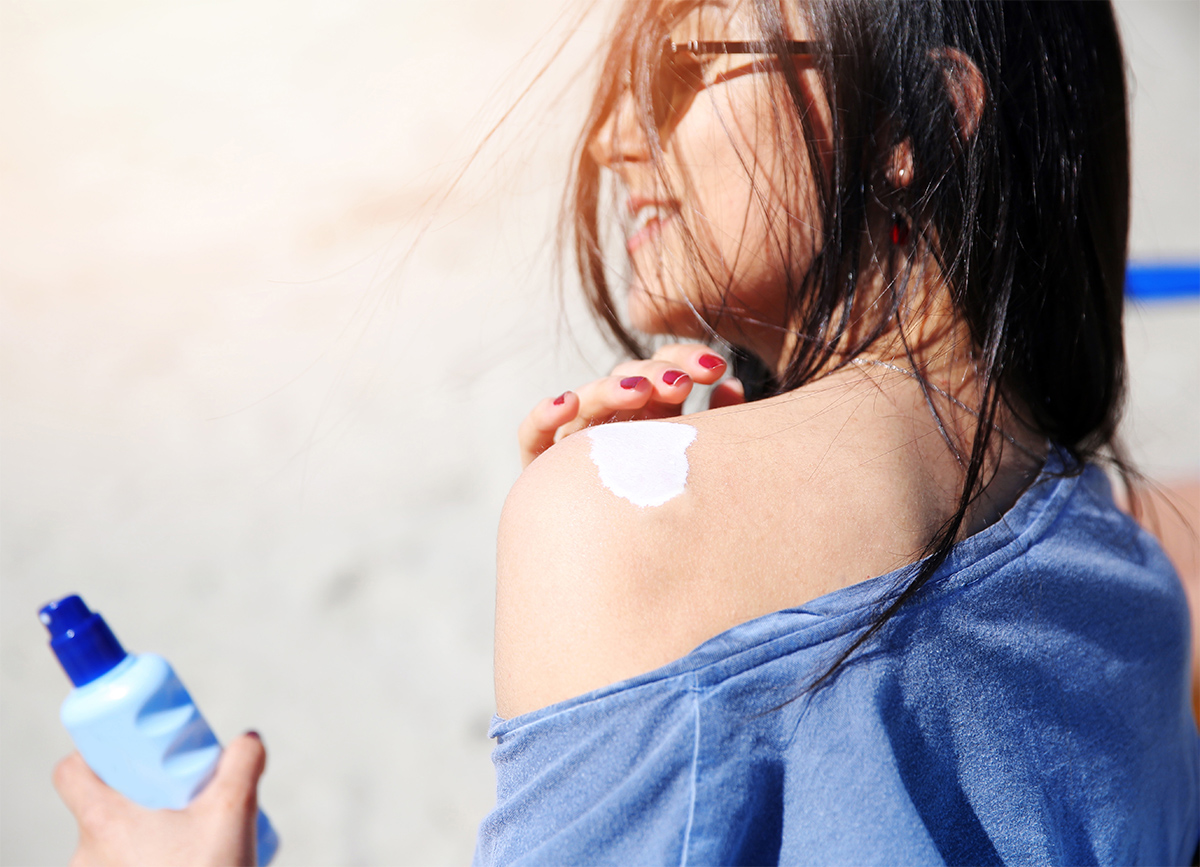So you’ve decided to take a more natural approach with your skincare, and with summer now here, it’s time to think about how to tackle sun protection.
In previous years, you might have automatically reached for the more traditional chemical sunscreens, but natural sunscreens (physical sunscreens) may have started to pop up on your radar.
If you’d like to learn more about these products, we’ve gathered together a selection of our favourites, along with some facts around taking a more natural route to staying sun-safe.

Chemical sunscreens contain synthetic compounds which work by creating a chemical reaction in our skin that changes UV rays into heat.
This heat is then released into the air.
Physical sunscreens contain active mineral UV filters (zinc oxide or titanium dioxide) which sit on top of the skin and deflect UV rays off the skin’s surface – as the name suggests, these sunscreens create a physical barrier.
Many people are now opting to use a physical sunscreen as it avoids chemicals being absorbed into the skin and this new generation of formulations rubs in easily and doesn’t leave a white cast on your skin – unlike the fluoro versions that some of us may remember wearing.
Do you apply physical and chemical sunscreens differently?
Because a physical sunscreen blocks UV rays, it should be applied as the last step in your skincare routine – after your moisturiser but before your makeup.
In contrast, a chemical sunscreen should be applied to clean skin before you apply any other skincare; this helps to maximise the absorption of UV rays.
Which kind of sunscreen is best for sensitive skin?
If you suffer from pigmentation, a physical sunscreen is a better option for you as chemical sunscreens can actually trigger heat-induced pigmentation.
Likewise, if you have sensitive skin, a physical/mineral sunscreen is much less likely to irritate or cause a reaction in your skin.

How do physical and chemical sunscreens feel?
Traditionally, physical/mineral sunscreens have received a bad rap for being thick, hard to rub in and for leaving a white residue on the skin.
Technology and formulations have come a long way in the past few years and it’s now possible to get a physical sunscreen that doesn’t leave a thick film on the skin.
Chemical sunscreens have the advantage of absorbing more easily into the skin, with some being undetectable to the touch after application.
For some people, a chemical sunscreen is the preferred choice simply because of the way it feels – especially if it’s being applied over the whole body.
What about the planet?
The chemicals oxybenzone and octinoxate, which are common in chemical sunscreens, have been found to be one of the causes of coral bleaching and genetic damage to coral and other marine organisms.
In 2018, Hawaii became the first US state to pass a bill banning the sale of any sunscreen that contains these chemicals.
Many people are now choosing a physical sunscreen over a chemical one for this reason, as well as the desire to reduce the number of chemicals absorbed into their skin through topical formulations.
 Getty Images
Getty Images

